Business
Water Services
for Water Supply Sihwa Lake
Tidal Power Plant Sea water
desalination High Quality
Tap Water Service
Sihwa Lake Tidal Power Plant
Korea's western coast boasts tidal ranges of up to 9 meters, providing a perfect setting for tidal power generation. The Sihwa Lake in Gyeonggi Bay suffered from serious pollution. In order to save the dying Gyeonggi Bay, Korea has built the largest tidal plant in the world by distributing sea water as well as utilize the tidal ranges of the western coast
Sihwa-lake tidal power plant will help boost Korea's energy self-sufficiency through the green energy development, can supply electricity to a population of 500,000, cut down petroleum imports by 862,000 barrels per year, and reduce the generation of CO2 by 315,000 tons per year. By distributing massive sea water through tidal power generation, the Sihwa Lake become full of life.
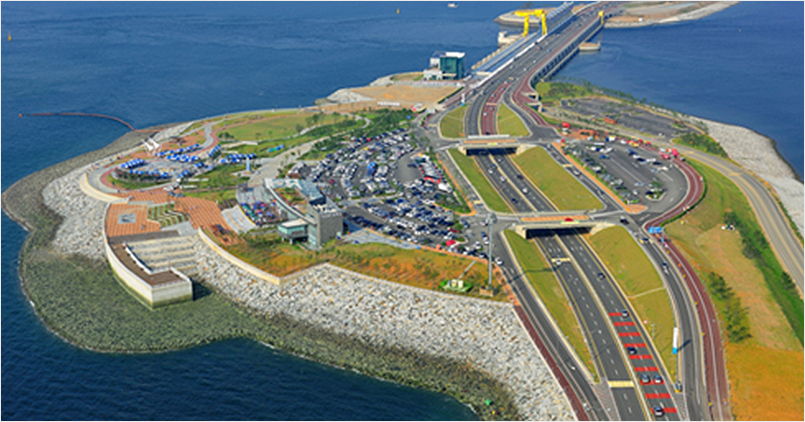
OVERVIEW
- Location : Sihwa embankment, Ansan City, Gyeonggi-do, Korea
- Power Capacity : 254MW(25.4MW×10 turbines)
- Energy Productivity : supply for 500,000 population City
- Number of Gates : 8 sluice gates
- Operation : since 2011
OUTCOMES
- Reduced CO2 by utilizing renewable energy (Annual reduction in CO2 : 315,000 tons)
- Improved the water quality of Sihwa Lake (Seawater Circulation : 147million ㎥/day)
- Opportunities for marine-based tourism (Expected visitors: 1 million people/year)
The Capacity of the Sihwa-lake tidal plant is 254MW, which is equivalent to about one fourth of a typical nuclear power plant.
The world's largest Sihwa-lake tidal power plant will put Korea on an equal footing with such advanced tidal power generating countries as France and Canada.
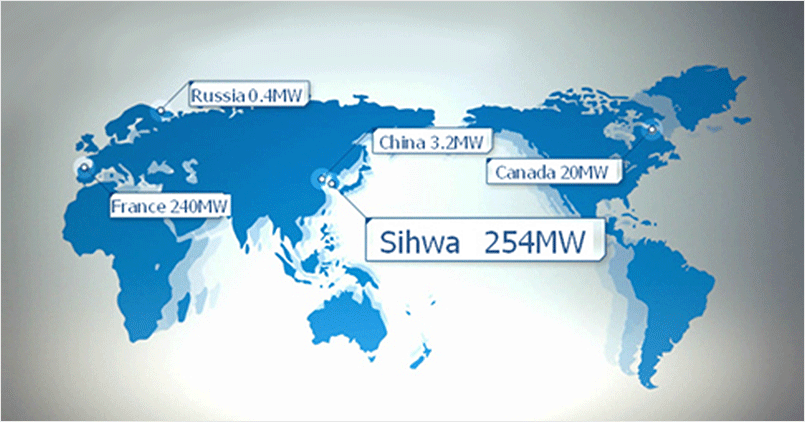
Sihwa-lake tidal power plant generates power by storing water during the flow, and releasing it during the ebb. It therefore relies on the change in water level between ebb and flow to generate power.
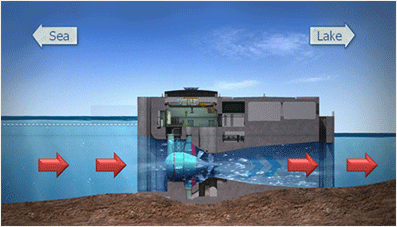
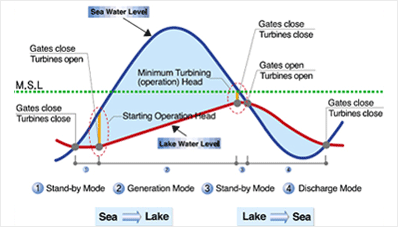
Sihwa-lake tidal power plant is an environmentally safe power plant creating clean, green energy. Tidal forces are unpolluted, renewable energy. The world's largest tidal power plant has been built in Korea for the first time, setting new standards for national energy policies and power plant construction.
The Sihwa-lake tidal power plant is a dynamic force that will lead Korea's green growth. K-water has always been a leader of eco-friendly land development and developing clean alternative energy. Through the Sihwa-lake tidal power plant, we are opening doors for a new future with clean energy and green growth.
View from the Sea

View from the Basin

Turbine Structure
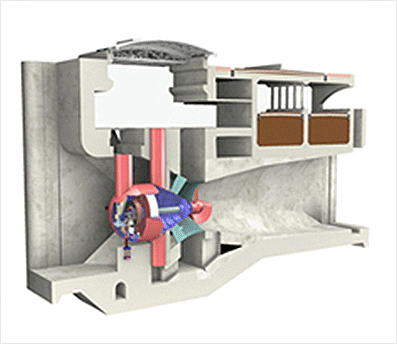
Gate Structure

- Dept: Sihwa Tidal Power Plant Office
- Name: Lim Jae In
 jaein_poter@kwater.or.kr
jaein_poter@kwater.or.kr 82-32-890-6521
82-32-890-6521